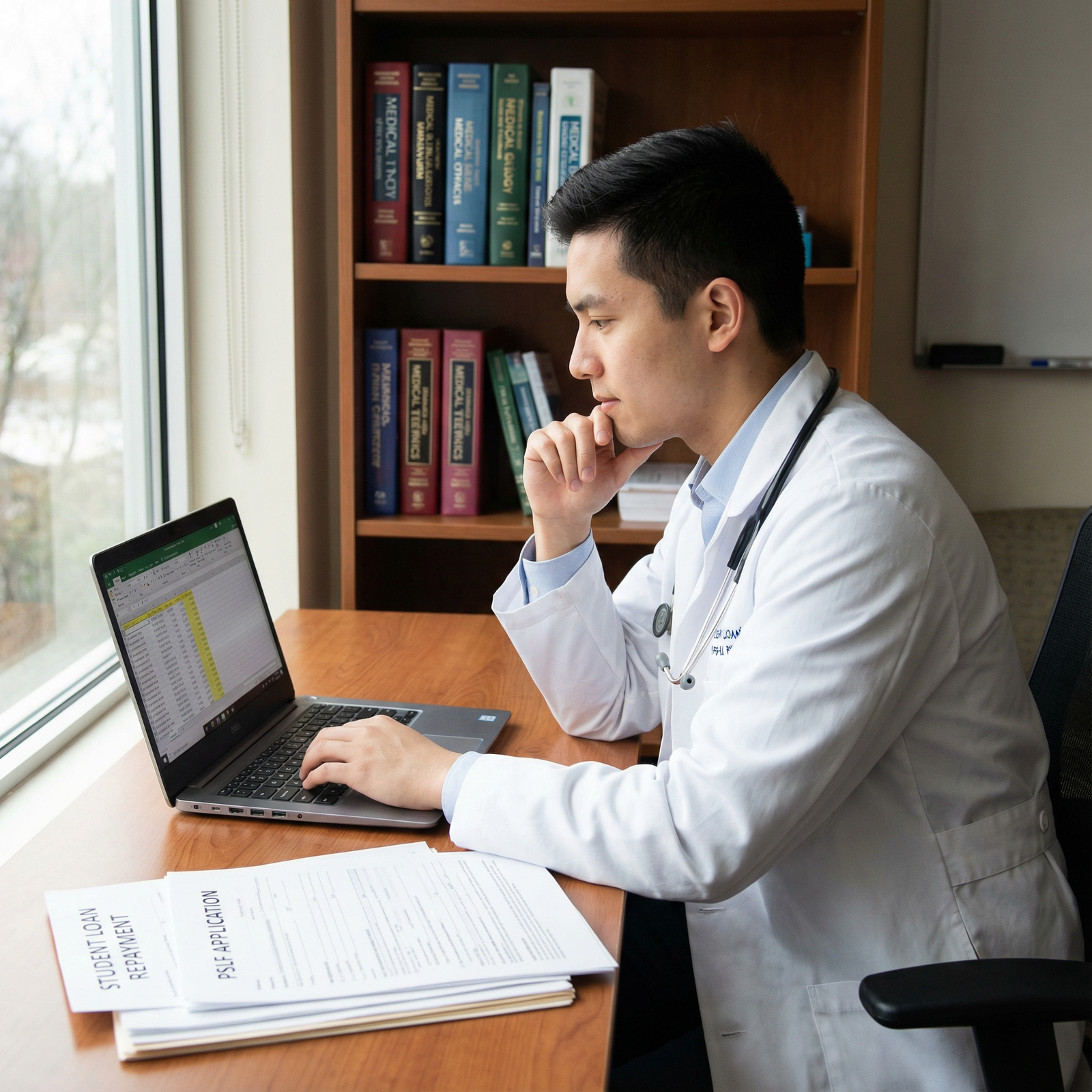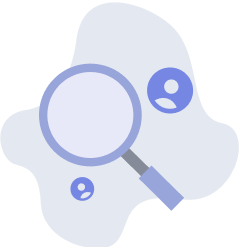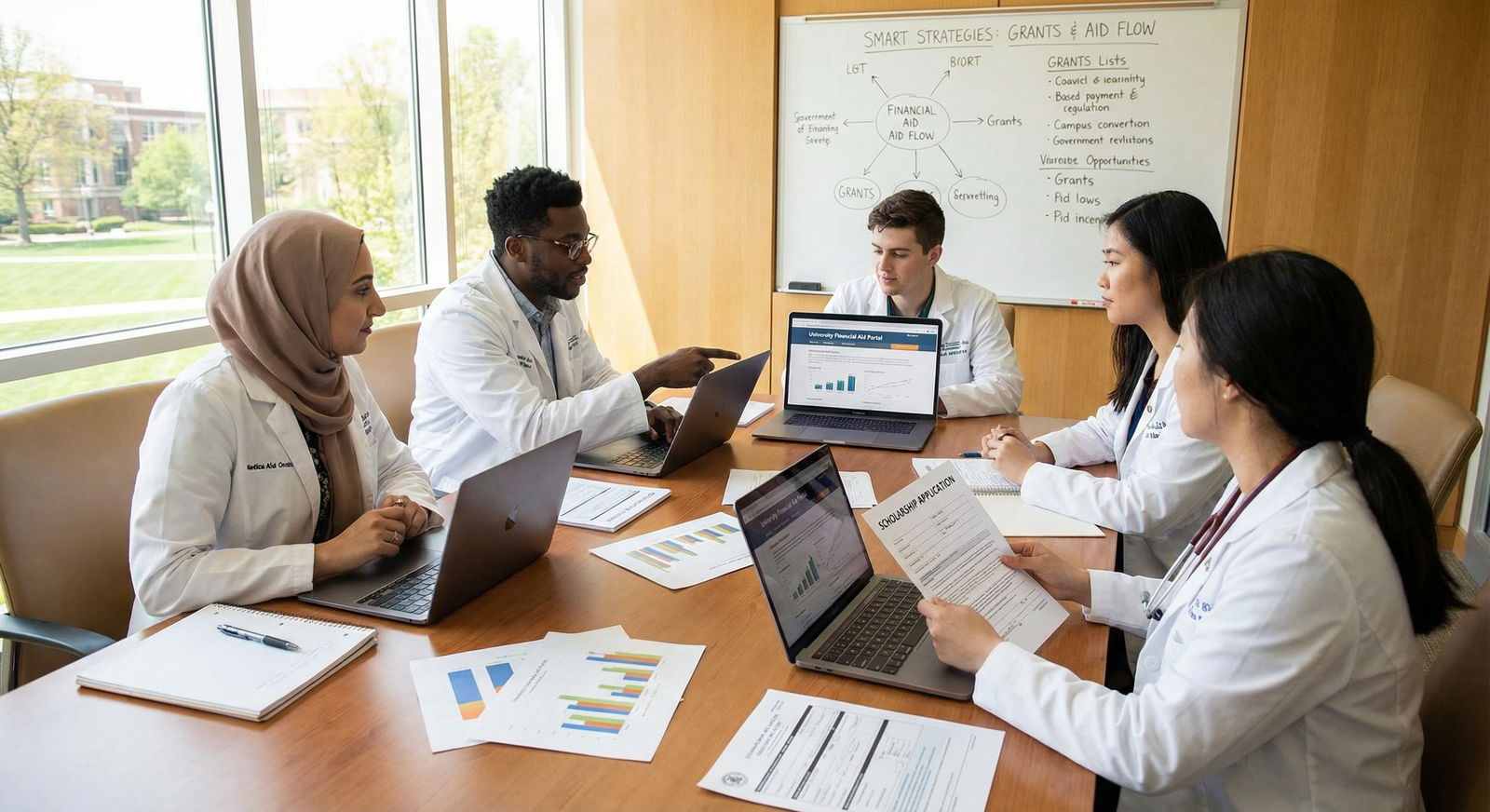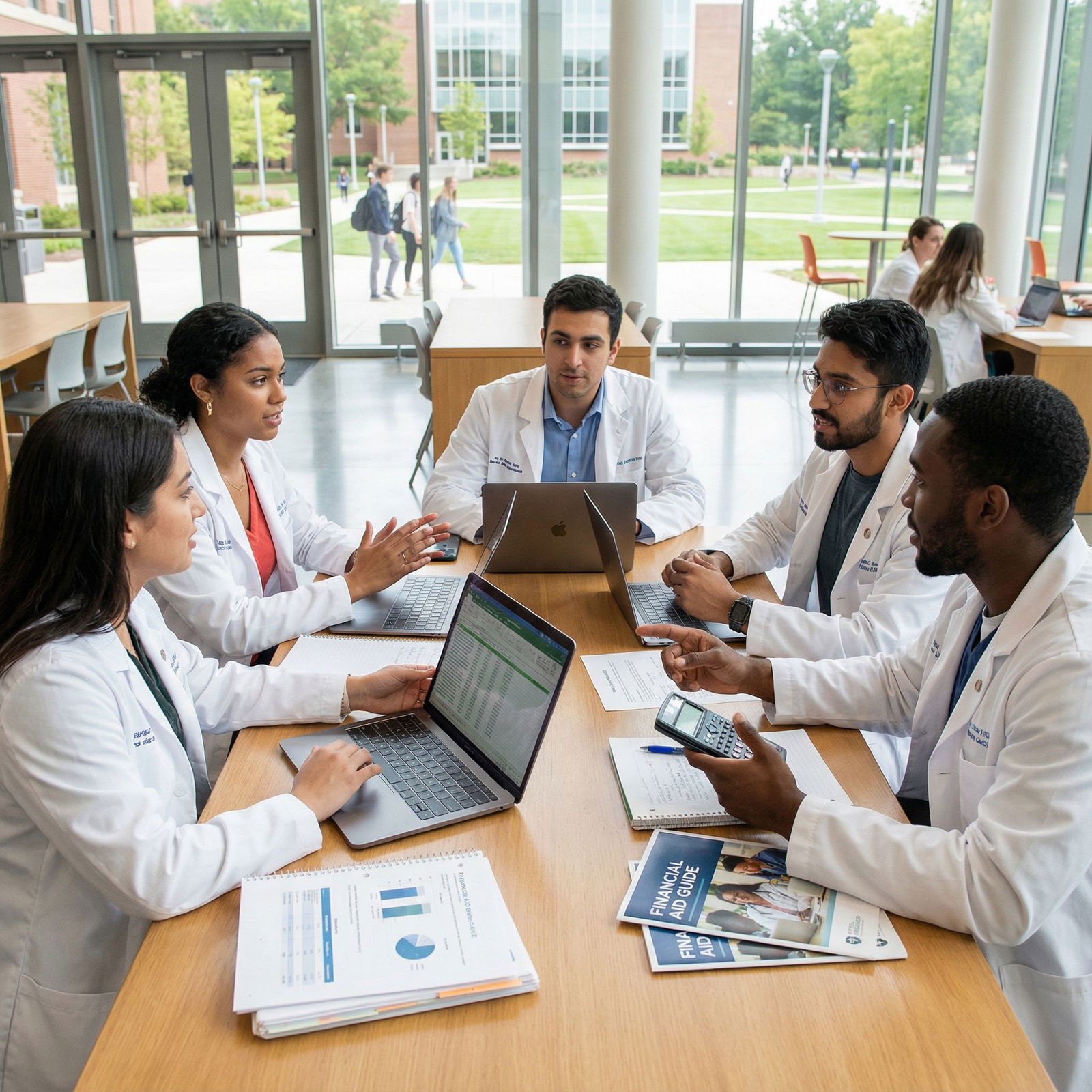Mastering Loan Forgiveness: Essential Strategies for Medical Students

Navigating Loan Forgiveness for Medical Students: Foundations and Big-Picture Strategy
Navigating student loans is challenging for any graduate, but for medical students facing six-figure balances, it can feel overwhelming. Between Public Service Loan Forgiveness (PSLF), Income-Driven Repayment (IDR) plans, and specialized programs like the National Health Service Corps (NHSC), the rules are complex—and the stakes are high.
Yet with a clear understanding of the main loan forgiveness pathways, eligibility criteria, and strategic timing, you can turn a stressful unknown into a manageable—and often highly favorable—part of your long-term financial planning. Thoughtful decisions made in MS1, MS4, or early residency can translate into tens or even hundreds of thousands of dollars in debt relief.
This guide is designed specifically for medical students and residents. It explains the key loan forgiveness programs, how they interact with your training and career choices, and practical steps to position yourself for maximum benefit.
Why Loan Forgiveness Matters So Much for Medical Students
Medical education is one of the most expensive professional training paths. Many graduates finish medical school with:
- Total debt well into six figures (often $200,000–$400,000+)
- Years of relatively low income during residency and fellowship
- Delayed ability to save for retirement, buy a home, or build a family
In this context, loan forgiveness is not just a “nice to have”—it is a cornerstone of responsible financial planning and long-term debt relief for many physicians.
The Financial Reality of Medical Education
Some key trends and realities:
- Average debt for U.S. medical school graduates frequently exceeds $200,000.
- Interest accrues during medical school and residency for most federal unsubsidized loans, compounding the burden.
- New physicians may experience a jump from a resident salary (~$60,000–$80,000) to attending income, potentially 3–5x higher, which affects repayment calculations and forgiveness strategies.
Without a strategy, it’s easy to:
- Overpay on your loans unnecessarily
- Miss out on years of qualifying PSLF or IDR forgiveness credit
- Choose a repayment plan that doesn’t align with your future income or career path
Conversely, with informed planning around education funding and loan forgiveness:
- You may qualify for full tax-free forgiveness after 10 years in public service (PSLF)
- You may have remaining balances forgiven after 20–25 years on an IDR plan
- You may supplement federal programs with targeted service-based repayment options (NHSC, state programs, military scholarships)
Loan forgiveness becomes part of a holistic strategy to build a sustainable, fulfilling, and financially secure medical career.
Core Federal Loan Forgiveness Programs for Medical Students
The major federal loan forgiveness programs relevant to medical students and residents are:
- Public Service Loan Forgiveness (PSLF)
- Income-Driven Repayment (IDR) Forgiveness
- National Health Service Corps (NHSC) and similar service-based programs
Understanding how they work—and how they overlap—is critical to informed decision-making.

1. Public Service Loan Forgiveness (PSLF)
PSLF is often the most powerful loan forgiveness pathway for medical students who plan to work in academic medicine, non-profit hospitals, VA facilities, or community health systems.
How PSLF Works
PSLF forgives the remaining balance on your eligible federal Direct Loans after you:
- Make 120 qualifying monthly payments (10 years)
- Under a qualifying repayment plan (usually an IDR plan)
- While working full-time for a qualifying employer
At the end of this period, your remaining balance is forgiven tax-free under current law.
PSLF Eligibility Requirements (Key Details)
To be on track for PSLF, all of the following must be true:
Qualifying Employer
- U.S. federal, state, local, or tribal government (e.g., VA hospitals, public health departments)
- 501(c)(3) nonprofit organizations (most academic medical centers and large health systems)
- Certain other non-profit organizations providing qualifying public services
Private for-profit hospitals and private practices generally do not qualify.
Qualifying Loans
- Only Direct Loans are eligible:
- Direct Unsubsidized Loans
- Direct Subsidized Loans
- Direct PLUS Loans (Graduate)
- Direct Consolidation Loans
- FFEL, Perkins, and some older loan types must be consolidated into a Direct Consolidation Loan to qualify going forward.
- Only Direct Loans are eligible:
Qualifying Repayment Plan
- Most borrowers pursue PSLF under an Income-Driven Repayment (IDR) plan:
- SAVE (successor to REPAYE)
- Pay As You Earn (PAYE) – for eligible borrowers
- Income-Based Repayment (IBR)
- Standard 10-year repayment technically qualifies, but if you stay on it the whole time, nothing would remain to be forgiven after 120 payments.
- Most borrowers pursue PSLF under an Income-Driven Repayment (IDR) plan:
Qualifying Payments
- Made after you enter repayment (not during in-school deferment)
- On-time (within 15 days of due date)
- For the full billed amount under a qualifying repayment plan
- While working full-time for a qualifying employer
Residency and fellowship years at a non-profit or government hospital can count toward PSLF, making them extremely valuable years for your forgiveness timeline.
Real-World Medical Example
- A resident enters repayment on an IDR plan during PGY-1 at a 501(c)(3) hospital.
- They make 3–7 years of low IDR payments during residency and fellowship, all counting toward PSLF.
- After training, they take an attending job at an academic medical center (also 501(c)(3)).
- They continue IDR payments; at Year 10 of qualifying employment/payments, any remaining balance is forgiven as tax-free debt relief.
For many high-debt physicians, PSLF can erase six figures of debt that would otherwise take decades to repay.
2. Income-Driven Repayment (IDR) Loan Forgiveness
Even if you never work in public service or don’t qualify for PSLF, Income-Driven Repayment forgiveness remains an important safety net.
How IDR Forgiveness Works
Under IDR plans, your monthly payment is pegged to a percentage of your discretionary income. After 20 or 25 years of qualifying payments, any remaining balance is forgiven.
Key points:
- REPAYE/SAVE: often 20–25 years depending on degree type and plan rules
- PAYE: typically 20 years
- IBR: 20 or 25 years depending on when loans were taken
Historically, IDR forgiveness was often treated as taxable income, meaning you might owe taxes on the forgiven amount. Recent legislation and temporary rules have altered this landscape, so it’s worth checking the current policy and consulting a tax professional as you approach the end of your term.
Who Benefits Most from IDR Forgiveness?
IDR forgiveness can be particularly helpful if:
- You choose a lower-paying specialty or work in rural/underserved settings
- You work for a for-profit employer and are not PSLF-eligible
- You have very high debt relative to your long-term income
- You need payment flexibility due to life events (family responsibilities, health issues, partial disability)
Even if you ultimately fully repay your debt before hitting the 20–25 year mark, IDR provides payment flexibility during residency and early attending years, which can be crucial for cash flow and mental well-being.
Real-World Medical Example
- A physician with $300,000 in federal loans chooses a for-profit hospitalist job.
- They enroll in an IDR plan; payments are lower in early years and increase with income.
- Over 20–25 years, they may pay off loans completely, or they may reach forgiveness with a remaining balance.
- If forgiveness occurs, they may need to plan for potential tax implications using a long-term financial planning strategy—setting aside savings in advance to handle any “tax bomb” if applicable under future law.
3. National Health Service Corps (NHSC) and Service-Based Repayment Programs
The National Health Service Corps (NHSC) provides loan repayment, not classic forgiveness, in exchange for service in Health Professional Shortage Areas (HPSAs). While medical students cannot usually participate until licensed, it’s vital to understand this option during your training as you consider specialty and practice location.
NHSC Loan Repayment Basics
NHSC offers loan repayment (often six-figure amounts over a few years) to:
- Primary care physicians (family medicine, internal medicine, pediatrics, OB/GYN)
- Psychiatrists and certain other behavioral health professionals
- Eligible clinicians who commit to working in designated HPSAs (e.g., rural areas, underserved urban communities)
Key considerations:
- You must have eligible educational debt from qualifying institutions and programs.
- You sign a service commitment (often 2–3 years).
- Payments are made directly toward your eligible loans.
- Some NHSC awards may be taxable; check current rules.
NHSC can be layered with IDR or PSLF in some circumstances. For example, if your NHSC-qualifying employer is also a non-profit or government facility, your payments can still count toward PSLF while NHSC provides additional lump-sum loan repayment.
Real-World Medical Example
- A family medicine physician with $250,000 in loans joins an NHSC-approved clinic in a rural area.
- They receive NHSC loan repayment (e.g., $50,000–$100,000 over 2–3 years) while on an IDR plan.
- If the clinic is part of a 501(c)(3) or government system, their employment may also qualify for PSLF, further accelerating debt relief over a 10-year horizon.
Strategic Steps Medical Students Should Take on the Path to Loan Forgiveness
Knowing the programs is only half the battle. The most important part is aligning your education funding decisions, residency choices, and repayment plan with your long-term career goals.
1. Understand Your Loans and Keep Them Organized
Before planning for forgiveness, you must know what you have:
- Log into the Federal Student Aid website and download a complete list of your loans.
- Identify:
- Loan types (Direct, FFEL, Perkins, private)
- Interest rates
- Total principal and accrued interest
Why this matters:
- Only federal Direct Loans qualify for PSLF.
- Non-Direct federal loans may need consolidation to become eligible for PSLF and certain IDR plans.
- Private loans generally do not qualify for federal forgiveness programs; they may need separate strategies (refinancing, aggressive repayment).
2. Choose Federal Loans over Private Whenever Possible
When considering education funding during medical school:
- Prioritize federal loans (Direct Unsubsidized, Graduate PLUS) over private loans when you have a choice.
- Federal loans come with:
- Access to PSLF and IDR forgiveness
- Flexible repayment and deferment options
- Safety nets in case of disability, unemployment, or lower-than-expected income
Private loans may occasionally have lower interest rates but lose you access to the most powerful debt relief tools available, especially PSLF.
3. Consider Early Enrollment in Income-Driven Repayment (During Residency)
For many medical residents, entering repayment in an IDR plan as soon as possible after graduation can be advantageous, especially if you’re aiming for PSLF:
- IDR payments during residency are typically very low due to low income.
- Every month of IDR payments at a qualifying employer counts toward:
- 10-year PSLF clock, and/or
- 20–25 year IDR forgiveness clock
- Pausing payments in forbearance or deferment may feel attractive in the short term but often costs you qualifying months and allows interest to accumulate unchecked.
Actionable step:
- As you approach graduation, schedule time with your financial aid office or a reputable financial planner who understands physician loan strategies.
- Decide whether to:
- Enter an IDR plan immediately after grace period, or
- Use deferment/forbearance (usually not favored if PSLF is a realistic goal)
4. Align Career Goals with Forgiveness Opportunities
Loan forgiveness should not completely dictate your specialty or career path—but it should be part of a realistic planning conversation.
Consider:
- Do you see yourself in academia, a VA hospital, or a large non-profit system?
PSLF is likely highly relevant. - Are you drawn to primary care in underserved communities?
NHSC and various state or employer-based programs may be excellent fits. - Do you prefer a for-profit hospital, private practice, or entrepreneurial path?
PSLF may not apply; focus on:- IDR forgiveness strategy
- Aggressive repayment with higher attending income
- Potential refinancing of loans once you’re established
Remember: you can change direction. Many physicians start at non-profit hospitals (accruing PSLF-qualifying time) and later move into private practice when their balance is significantly lower.
5. Document Everything and Use Official Forms
For PSLF in particular, documentation is critical.
- Submit the PSLF Help Tool / Employer Certification Form annually or whenever you change employers:
- Confirms your employer qualifies
- Tracks qualifying payments accurately in the government’s system
- Keep copies of:
- Employment contracts
- Pay stubs or HR letters confirming full-time status
- Communications with your servicer
If there is ever a discrepancy, this paper trail can prevent lost years of qualifying payments.
Advanced Considerations: Taxes, Refinancing, and Professional Advice

Tax Implications of Loan Forgiveness
- PSLF: Forgiveness is currently not taxable under federal law.
- IDR Forgiveness: Historically treated as taxable income (subject to evolving law and temporary relief measures).
Practical steps:
- As you approach potential IDR forgiveness (years 15–20+), engage a CPA or tax professional:
- Estimate potential tax liability on forgiven amounts based on current law
- Incorporate this into long-term financial planning (e.g., setting aside savings, retirement planning, or investment strategies)
Should You Refinance Your Loans?
Refinancing federal loans with a private lender can lower your interest rate but comes with trade-offs:
- You lose access to:
- PSLF
- IDR plans
- Federal deferment, forbearance, and discharge protections
- Refinancing is generally only considered when:
- You are certain you will not pursue PSLF or other federal forgiveness
- You have stable, high income
- You have a strong emergency fund and good disability insurance
Many physicians who are not PSLF-eligible still wait until after residency to refinance, when their income and credit scores improve.
Working with a Specialist in Physician Finances
Given the complexity of loan forgiveness, education funding, and long-term debt relief, many medical students and residents benefit from:
- Independent financial planners specializing in physicians
- Non-profit credit counseling organizations with student loan expertise
- Educational webinars and resources from credible physician financial education platforms
Look for advisors who are:
- Fiduciaries (legally obligated to act in your best interest)
- Transparent about fees
- Familiar with PSLF, IDR, NHSC, and common physician career paths
Frequently Asked Questions: Loan Forgiveness for Medical Students and Residents
Q1: What types of loans qualify for Public Service Loan Forgiveness (PSLF)?
A: Only Direct Loans qualify for PSLF. If you have older FFEL or Perkins Loans, you may need to consolidate them into a Direct Consolidation Loan to make them eligible going forward. Private loans do not qualify for PSLF under current rules.
Q2: Is loan forgiveness considered taxable income?
A:
- PSLF: Currently not considered taxable income for federal tax purposes.
- IDR Forgiveness: Historically treated as taxable income when the remaining balance is forgiven after 20–25 years, although recent and temporary rules may provide relief through certain years. State tax treatment may vary. Because the rules can change, it’s essential to consult a tax professional as you approach the end of your repayment term.
Q3: What if I don’t qualify for PSLF or decide to work in private practice?
A: If PSLF isn’t an option, you still have tools for debt relief and financial planning:
- Enroll in an IDR plan to keep payments affordable and maintain eligibility for long-term IDR forgiveness.
- Consider aggressive repayment once your income rises, aiming to retire debt in 5–10 years if feasible.
- Evaluate refinancing some or all of your federal loans to lower interest rates once you’re confident you won’t use PSLF or federal IDR protections.
- Explore state-based or employer-based loan repayment programs for physicians, especially in underserved or rural areas.
Q4: Can I switch repayment plans later if my situation changes?
A: Yes. You can switch between most federal repayment plans, including different IDR options, although there may be some limitations or capitalization of interest when you change plans. It’s wise to:
- Reassess your plan at major life milestones:
- Starting residency
- Finishing residency/fellowship
- Major income increase or decrease
- Marriage or family changes
- Use the Federal Student Aid loan simulator or consult a financial professional before changing plans to understand long-term implications.
Q5: How early in medical school should I start planning for loan forgiveness?
A: Ideally, you should start thinking about loan forgiveness and debt management as soon as you begin borrowing:
- During MS1–MS4:
- Track your borrowing each year
- Prefer federal loans over private loans when possible
- Learn the basics of PSLF and IDR and how they might fit your career goals
- During M4 and early residency:
- Decide whether to enter IDR promptly after graduation
- Consider whether your residency hospital is a qualifying PSLF employer
- Start submitting PSLF employer certification forms if PSLF is a likely path
Planning early doesn’t lock you in, but it does keep all your options open and maximizes your flexibility and potential savings later.
Conclusion: Building a Thoughtful Loan Forgiveness Strategy as a Future Physician
Loan forgiveness is not a magic solution, but for many medical students it is a powerful, legitimate, and essential tool for managing the high cost of medical education. By understanding:
- How PSLF rewards public service with potentially tax-free forgiveness in 10 years
- How IDR forgiveness offers a long-term safety net and payment flexibility
- How NHSC and other service-based programs can exchange meaningful work in underserved areas for substantial loan repayment
…you can transform an intimidating student loan balance into a manageable part of your broader professional and personal financial planning.
The key is to:
- Stay informed about evolving rules and policies
- Keep your loans organized and your documentation thorough
- Align your repayment strategy with your evolving career goals
- Seek expert guidance when needed
With thoughtful planning and strategic use of available debt relief programs, you can move through training and into practice with greater financial confidence—and focus on what drew you to medicine in the first place: caring for patients and serving your community.

SmartPick - Residency Selection Made Smarter
Take the guesswork out of residency applications with data-driven precision.
Finding the right residency programs is challenging, but SmartPick makes it effortless. Our AI-driven algorithm analyzes your profile, scores, and preferences to curate the best programs for you. No more wasted applications—get a personalized, optimized list that maximizes your chances of matching. Make every choice count with SmartPick!
* 100% free to try. No credit card or account creation required.













